The wise men brought three gifts to the baby Jesus: gold, frankincense, and myrrh. He was King, so gold makes sense, but why frankincense and myrrh? Why were these given to baby Jesus and what makes them so important and special? Historically, essential oils or aromatic oils were used by Egyptians as early as 4500 B.C. Scripturally, oils appear in the Bible time and time again, often referencing olive oil, but the oils we are about to explore are also all mentioned.
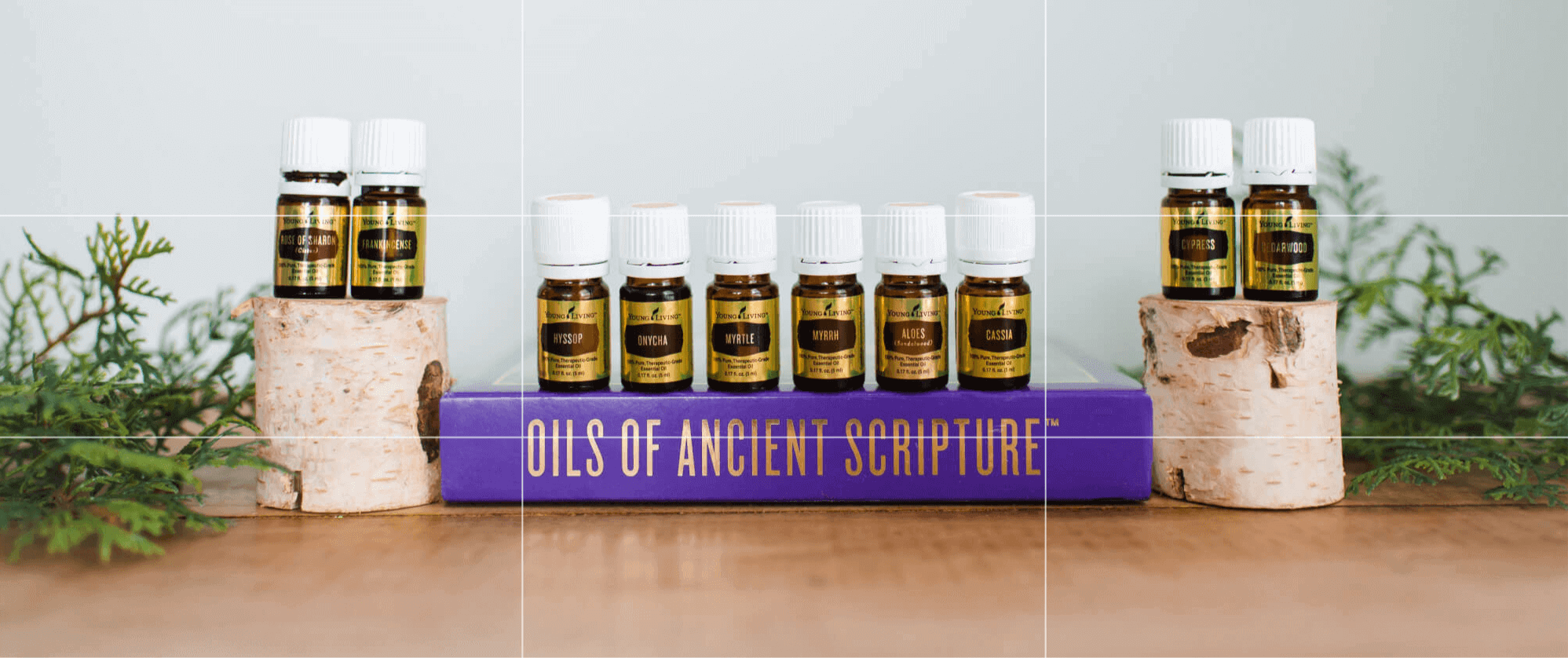
I'm talking about the Oils of Ancient Scripture collection. This incredible kit comes with 10 precious oils that are rich in history and traditions. Many of the oils in this collection are good for prayer. Prayer has many forms. Sometimes it is much like meditation in that it is a time for thought and reflection. Did you know that meditation can actually help our immunes systems? Rudolph Tanzi, who holds positions both at Harvard University and Massachusetts General Hospital, stated that “Meditation is one of the ways to engage in restorative activities that may provide relief for our immune system, easing the day-to-day stress of a body constantly trying to protect itself.” Who knew?!
So, let's dive in and learn more about each of these oils, shall we?
Aloes aka (Sacred Sandalwood)
“He was accompanied by Nicodemus, the man who earlier had visited Jesus at night. Nicodemus brought a mixture of myrrh and aloes, about seventy-five pounds. 40 Taking Jesus’ body, the two of them wrapped it, with the spices, in strips of linen. This was in accordance with Jewish burial customs.” John 19:39-40
Aloes appears in the Bible five times in both the old and the new testament. It’s believed to be made from fragrant sandalwood. It was most notably used to prepare Jesus’ body for burial.
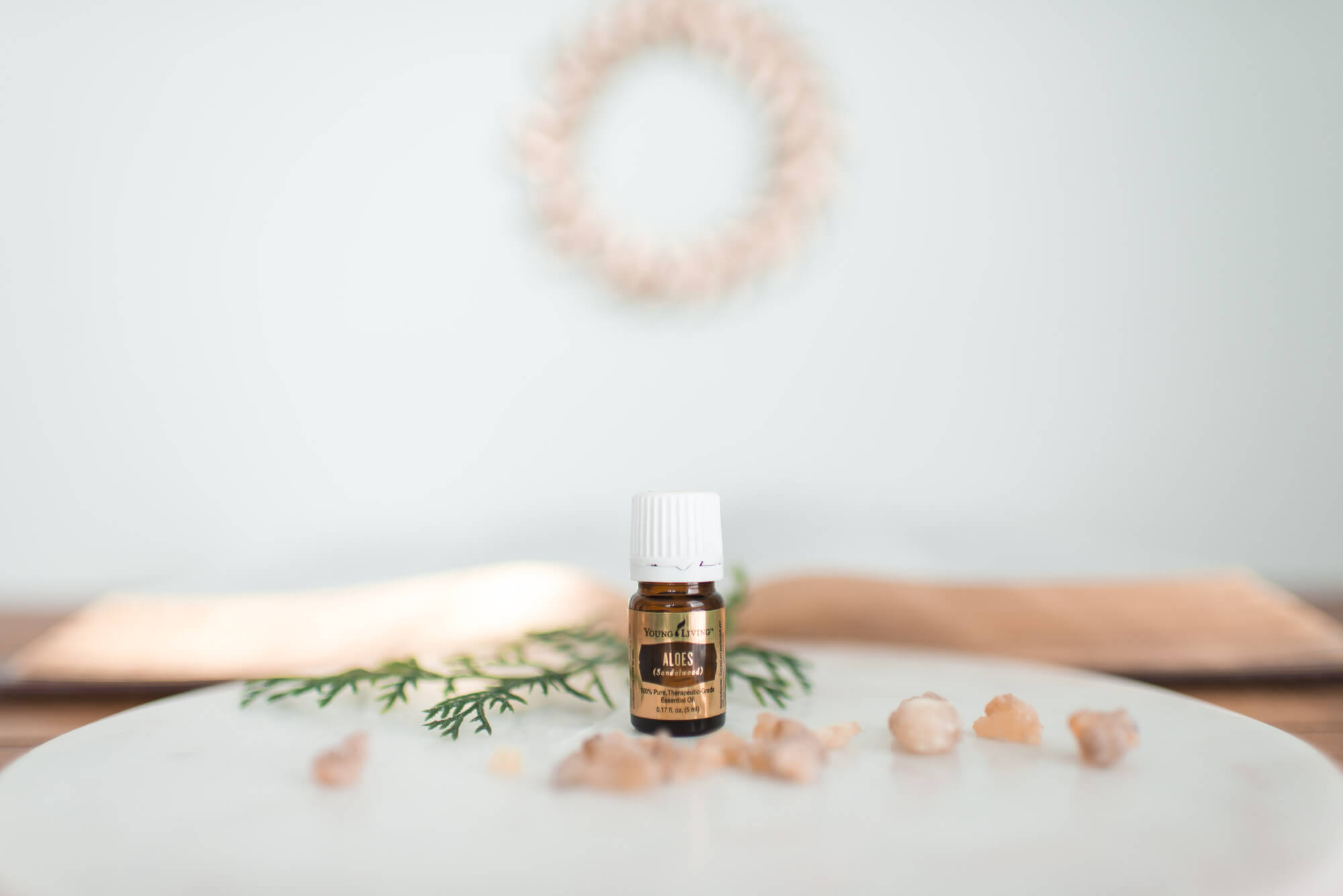 Then:
Then:Historically, it is thought to be one of the oldest types of incense used during rituals and meditation, especially among the Egyptians and for embalming. The amount of aloes that Nicodemus bought showed his incredible wealth. That amount (75-100 lbs) of Sandalwood would be worth over $200,000 in today’s market. It also showed how important Jesus was.
Now:
Sandalwood is known to have a warm, woodsy and slightly sweet aroma.
Common uses:
- Upscale spa treatments and yoga studios use it to enhance member experiences.
- Try diffusing when you’re a little revved up or when your mind won’t turn off. It can be very effective before bedtime.
- You can use it as a perfume or cologne.
- It has incredible properties for the skin. Apply topically to enhance the natural radiance of healthy-looking skin or add it to your daily skin care regimen to reduce the appearance of fine lines, puffiness, and blemishes.
Cassia
Cassia: a spice made from the bark of East Asian evergreen trees.
“All your robes are fragrant with myrrh and aloes and cassia; from palaces adorned with ivory the music of the strings makes you glad. “ Psalm 45:8
Then: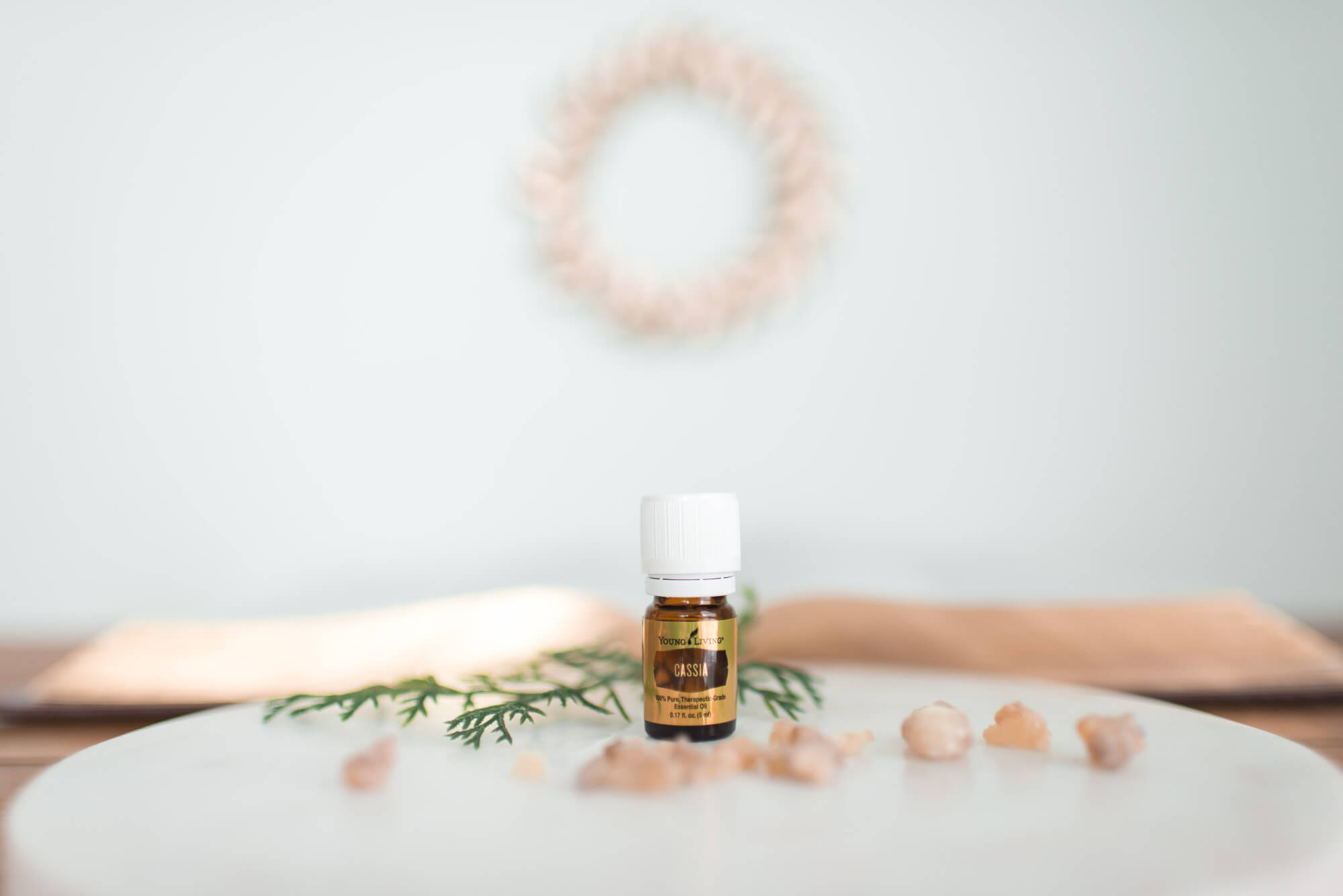

Cassia is mentioned three times in the Bible- all in the Old Testament. It was a key ingredient in the incense used in temple worship; it was also used as the anointing oil and the oil that burned daily in the temple lamps. It also dates back to Egyptian times and was used during mummification.
Now:
It’s noted for its unmistakable fragrance and calming aromatic properties. While its aroma is very closely related to cinnamon, the chemical properties are quite different.
Common uses:
- Put a drop or two on your fingers and rub your hands through your hair to provide a pleasant aroma to your hair.
- Add one drop to citrus blends or diffuse with Clove, Ginger or Christmas Spirit during the fall, winter, and holidays.
Tips & Safety:
If used topically, it needs to be diluted with a carrier oil because it can feel “hot” to the skin unless diluted. If the warming sensation is too strong, just apply more carrier oil.
Use with caution if pregnant and avoid contact with sensitive areas like the eyes; do not use on children. It can cause skin sensitivity, so test on a small area first.
Cedarwood
“His young shoots will grow. His splendor will be like an olive tree, his fragrance like a cedar of Lebanon.” Hosea 14:6
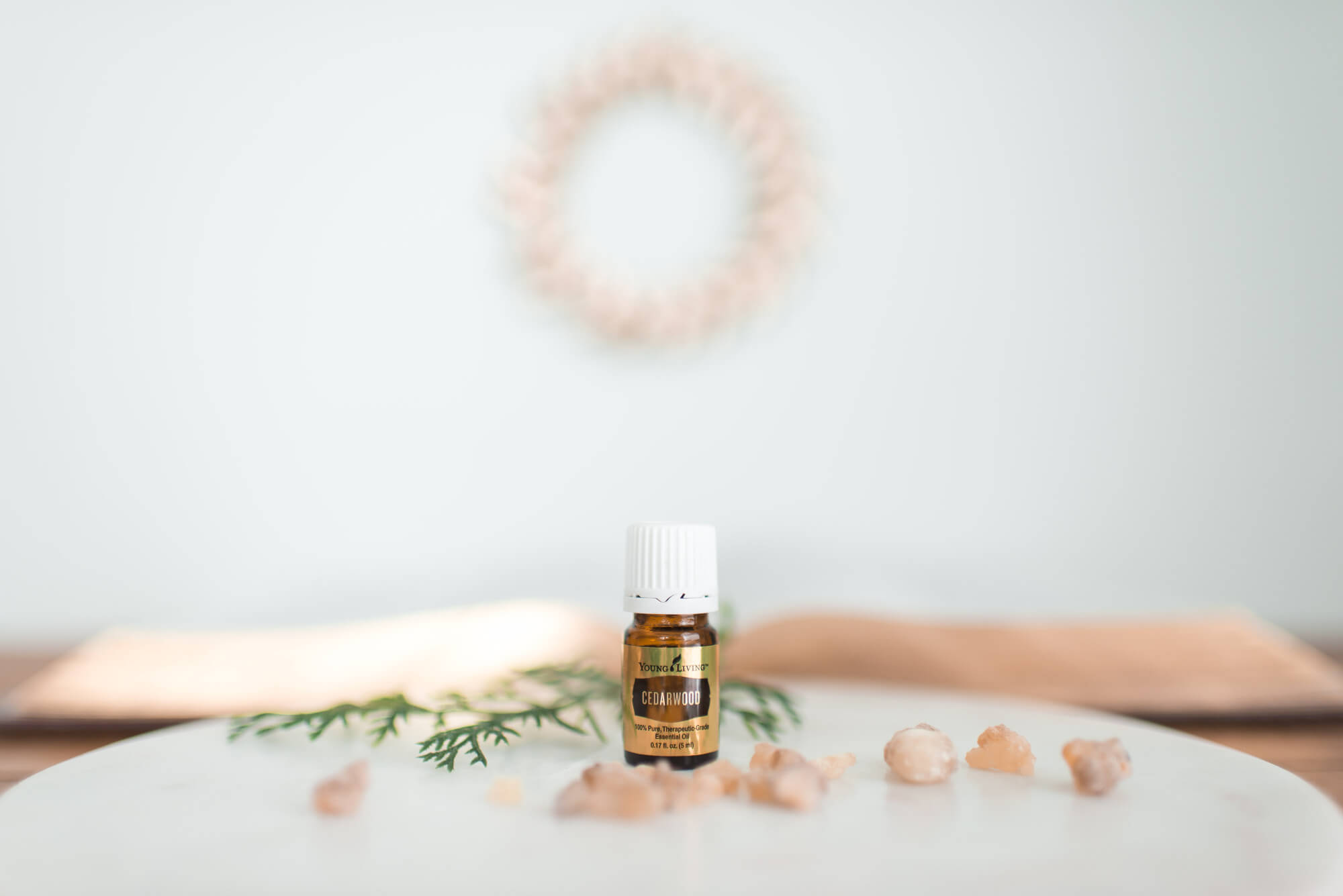
Then:
This versatile wood is mentioned 21 times in the Bible. The wood was used to build Solomon’s beautiful temple and it was known for its durability. The ancient Egyptians used Cedarwood oil to embalm, for perfumery, and in cosmetics; the ancient Greeks also used Cedarwood oil on bodies as they believed it helped to make one immortal.
Now:
Cedarwood has a warm, woodsy aroma that creates a comforting, uplifting experience.
Common uses:
- It’s often found in men’s aftershaves and colognes because of its scent. Add a drop to your aftershave lotion.
- Add it to your favorite skin care products or lotions to help create smoother skin.
- Add it to your shampoo & conditioner for shinier, healthier-looking hair.
- Many people find it helpful for restful sleep, diffuse or apply topically before bed.
Cypress
“He cut down cedars, or perhaps took a cypress or oak. He let it grow among the trees of the forest, or planted a pine, and the rain made it grow.” Isaiah 44:14
This oil is extracted from the cypress tree, which has wood so durable that the cypress doors of Rome’s St. Peter’s Basilica show no signs of decay, even after 1,200 years!
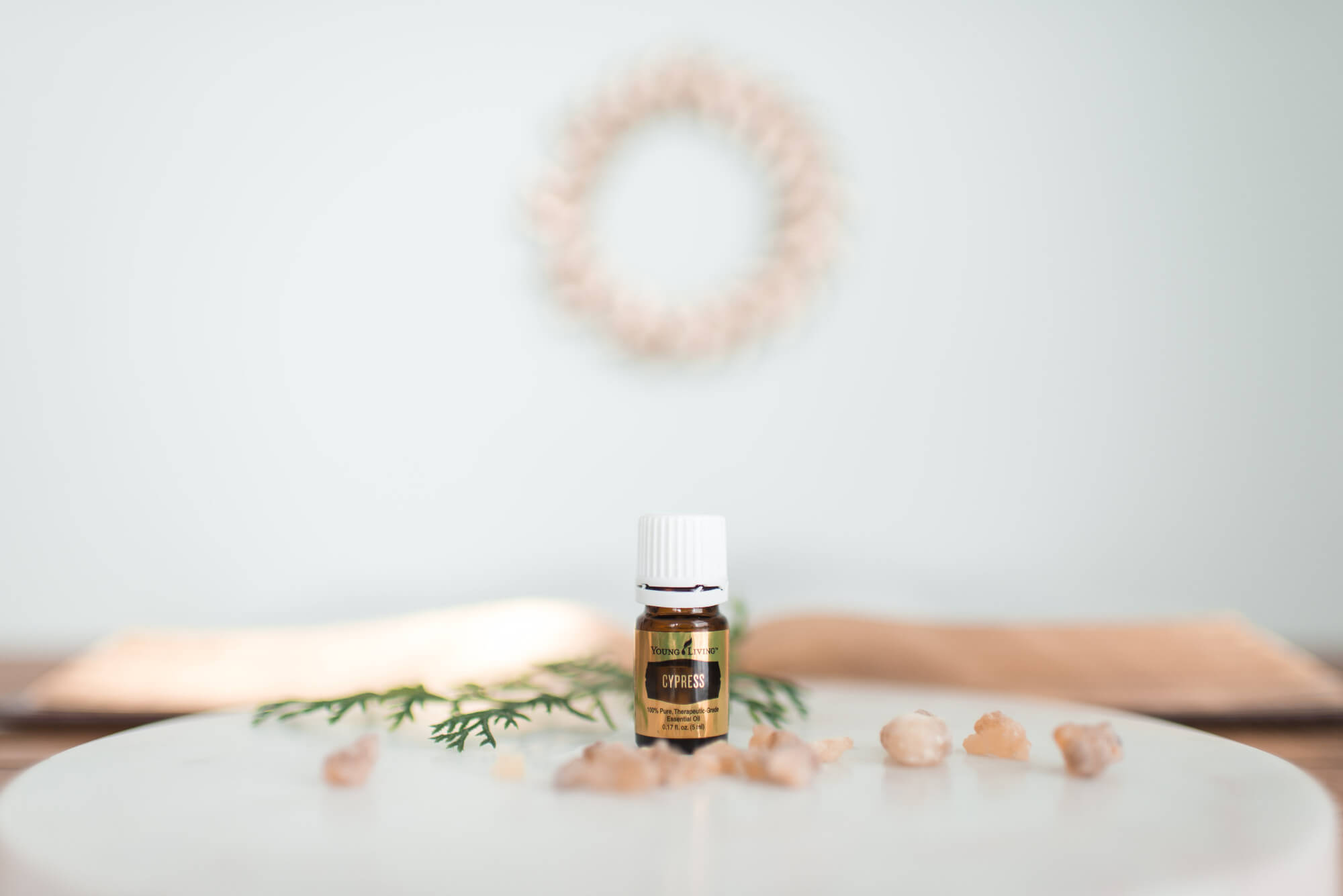
Then:
Cypress is mentioned five times biblically and all in the Old Testament. The tree was used mostly for its wood as it was strong and durable. Noah used it to build the ARK! Greeks and Romans used it for relieving upset tummies and used the leaves of the tree to help treat.... OK, I don’t know if I can say, or want to, so just go Google it. =)
Now:
Cypress has a fresh and herbaceous aroma. It can be grounding and energizing at the same time when diffused. It can help restore feelings of security and stability.
Common uses:
- Those with oily complexions, add one drop to your moisturizer to increase the radiant look of your skin.
- Diffuser 4-6 drops to increase motivation.
- Mix 3 drops of Cypress with a carrier oil and massage your legs to get the blood flowing and your energy and motivation up before a run.
Fun Fact:
It's an evergreen that is used frequently in landscaping. I bet you see it all the time and had no idea that it was a Cypress. Google and search for an image so you can spot it as you drive by homes!
Frankincense
“On coming to the house, they saw the child with his mother Mary, and they bowed down and worshiped him. Then they opened their treasures and presented him with gifts of gold, frankincense and myrrh.” Matthew 2:11
The Hebrew word for frankincense, levonah, is used in the Bible 22 times, making it one of the most recognized materials in scripture. Most famously it was a gift given to the infant Jesus when the wise men came to visit him.
 Then:
Then:An ancient aromatic resin used for incense, perfumes & balms, Frankincense was a consecrated incense described in the Bible for use in offerings & ceremonies in the temple in Jerusalem...a symbol of holiness & righteousness. The gift of frank to Christ was symbolic of his willingness to become a sacrifice, analogous to a burnt offering in the temple. It is also said to be symbolic of his deity.
Now:
Aromatically this oil has an earthy and uplifting smell that creates a comforting, safe, and empowering environment.
Common uses:
- Diffuse or apply to enhance meditation & prayer.
- Apply one drop of oil to your face moisturizer; its rejuvenating properties will brighten & beautify your skin.
- Add a drop or two to your hand moisturizer to help avoid those dry hands!
- Apply a few drops of frankincense to “the girls” daily.
Hyssop
“Cleanse me with hyssop, and I will be clean; wash me, and I will be whiter than snow” Psalms 51:7
The 12 Biblical references to this plant indicate it was likely used in practices and rituals intended to purify and cleanse.
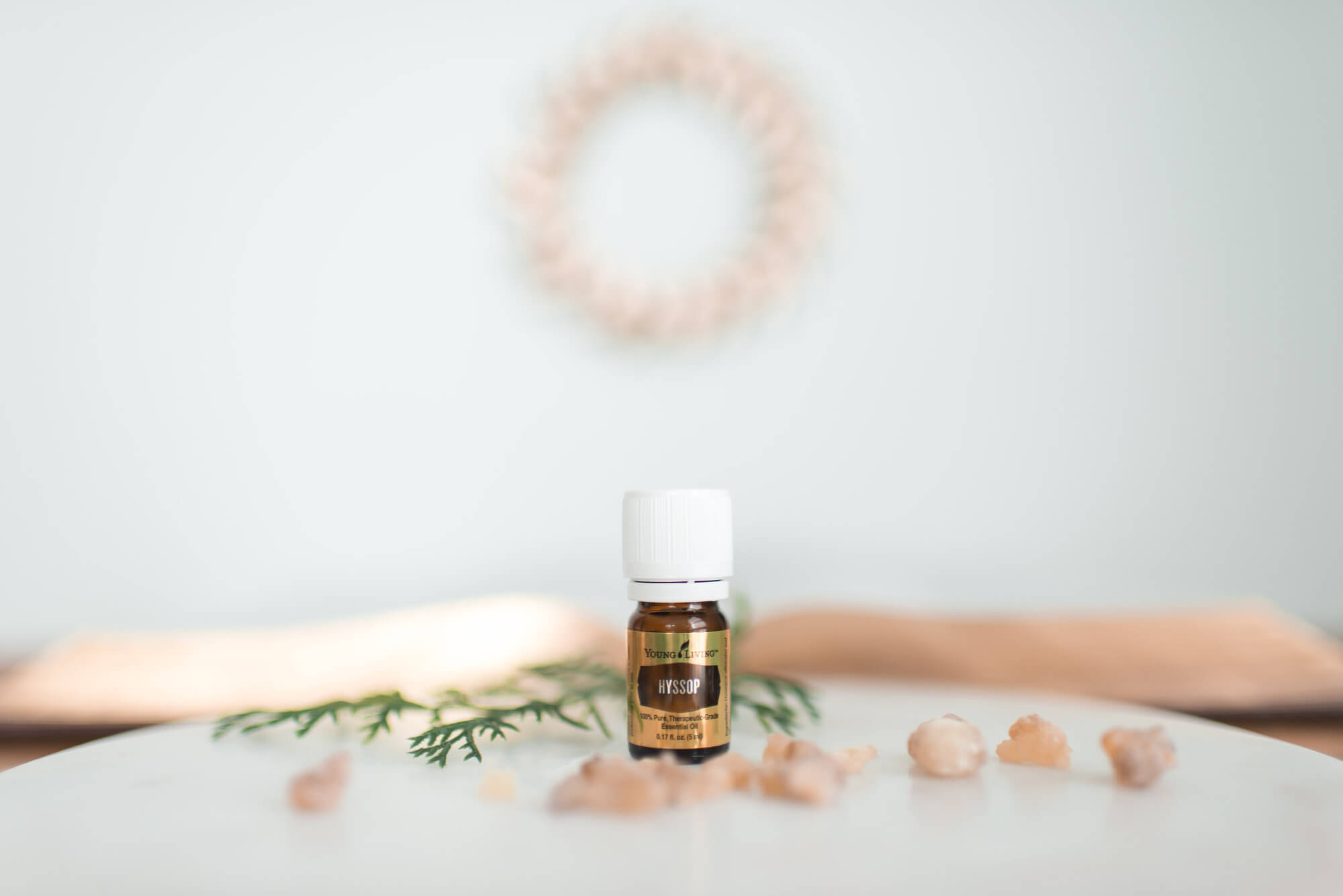
Then:
Hyssop has a slightly sweet scent and was considered a sacred oil in ancient Egypt, Israel, and Greece. It is in the same family as mint. This plant was used in traditional and herbal practices for centuries to promote wellness.
Now:
Its fragrant scent stimulates creativity and meditation.
Common uses:
- Apply a drop or two or diffuse 4-8 drops during work, play, yoga, or a long study session.
- Safety: Please dilute well if using topically and do not use on small children.
Myrrh
“Then they offered him wine mixed with myrrh, but he did not take it.” Mark 15:23
“On coming to the house, they saw the child with his mother Mary, and they bowed down and worshiped him. Then they opened their treasures and presented him with gifts of gold, frankincense, and myrrh.” Matthew 2:11
Myrrh is mentioned 17 times in the Bible and is found in both the Old and New Testament.
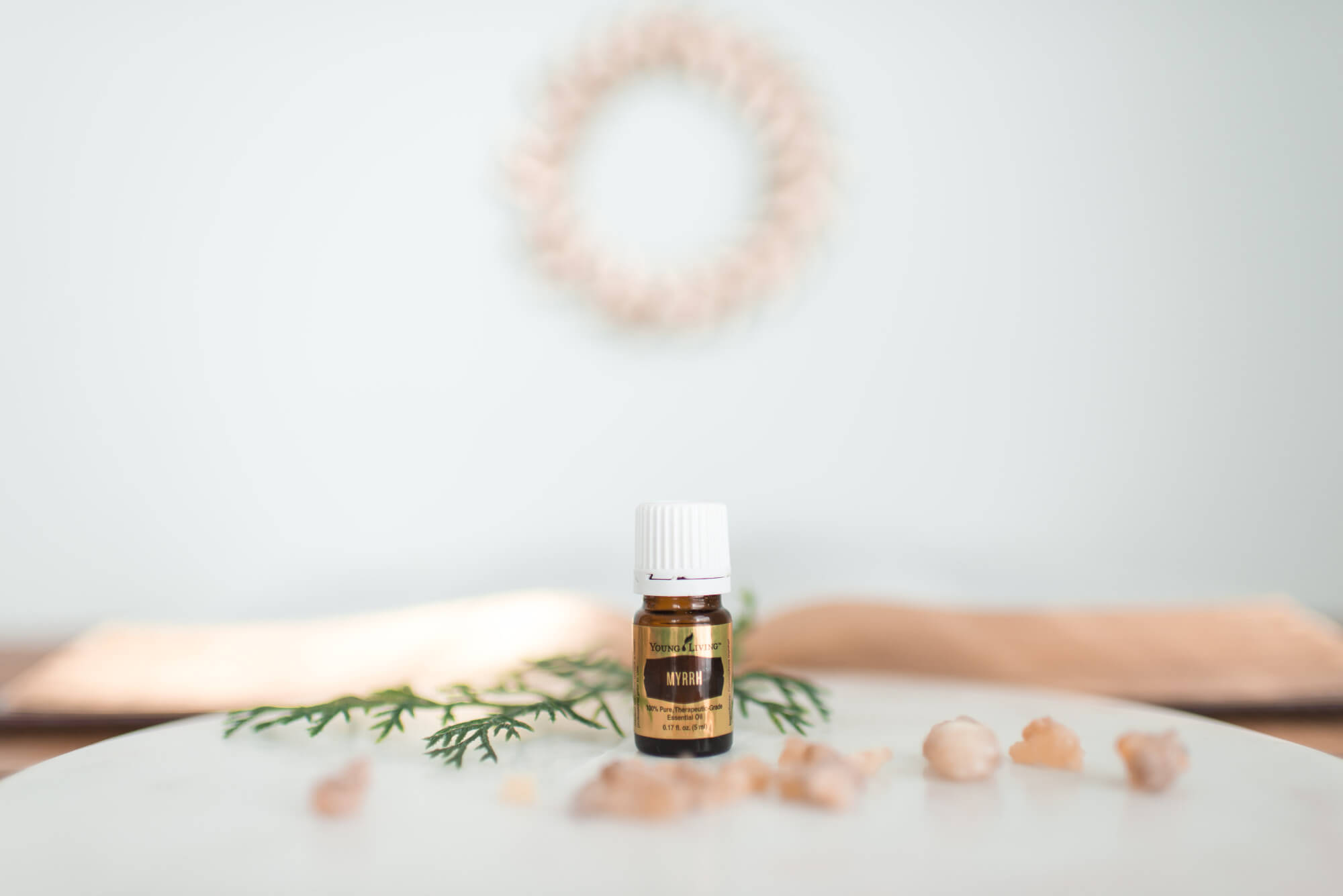 Then:
Then:It was a key ingredients in Moses’ holy anointing oil & as incense in the holy temple. It's used particularly for the mouth & gums. It was given to the baby Jesus by one of the wise men to foreshadow his death because in ancient times it symbolized bitterness, suffering & affliction. It was also employed in embalming & religious ceremonies.
Now:
Myrrh oil is valued around the world for its beautifying properties & grounding aroma. Myrrh is common in cosmetic & aromatic industries. It is said to help promote a smooth & youthful complexion. It also has many health benefits. A quick Google search, “benefits of Myrrh oil” will share some valuable information.
Common uses:
- Add a drop, along with frankincense to your daily skincare routine.
- Add a drop to any skin balm recipe.
- Diffuse 4-8 drops for a calming and relaxing environment.
Myrtle
“Go out into the hill country and bring back branches from olive and wild olive trees, and from myrtles, palms and shade trees, to make temporary shelters”—as it is written.” Nehemiah 8:15
Biblically, myrtle branches were used in ceremonies and were also a sign of God’s goodness; they are mentioned seven times, all in the Old Testament.

Then:
Sukkot, commonly translated as the Feast of Tabernacles, includes myrtle branches in its ceremony. Sukkot is a weeklong Jewish holiday that comes five days after Yom Kippur. Sukkot celebrates the gathering of the harvest and commemorates the miraculous protection God provided for the children of Israel when they left Egypt.
Now:
It is still used in Sukkot ceremonies today! It is difficult to source and has a fresh, sweet aroma, which may help clear the mind. Two favorite oil blends containing it are Purification and R.C.
Common uses:
- Add a drop to your nighttime skin routine to enhance the appearance of healthy-looking skin.
- Diffuse 4-8 drops to elevate your mood.
Onycha
“Then the Lord said to Moses, “Take fragrant spices—gum resin, onycha and galbanum—and pure frankincense, all in equal amounts.” Exodus 30:34
Onycha was an ingredient in the “pure and holy” perfume or incense the Lord commanded Moses to make.
There are varying opinions as to what Onycha actually was but there are many that agree that it is likely Benzoin, a balsamic resin obtained from the bark of several species of trees. That is what Young Living’s Oil is made of, having a sweet and woody vanilla-like aroma.
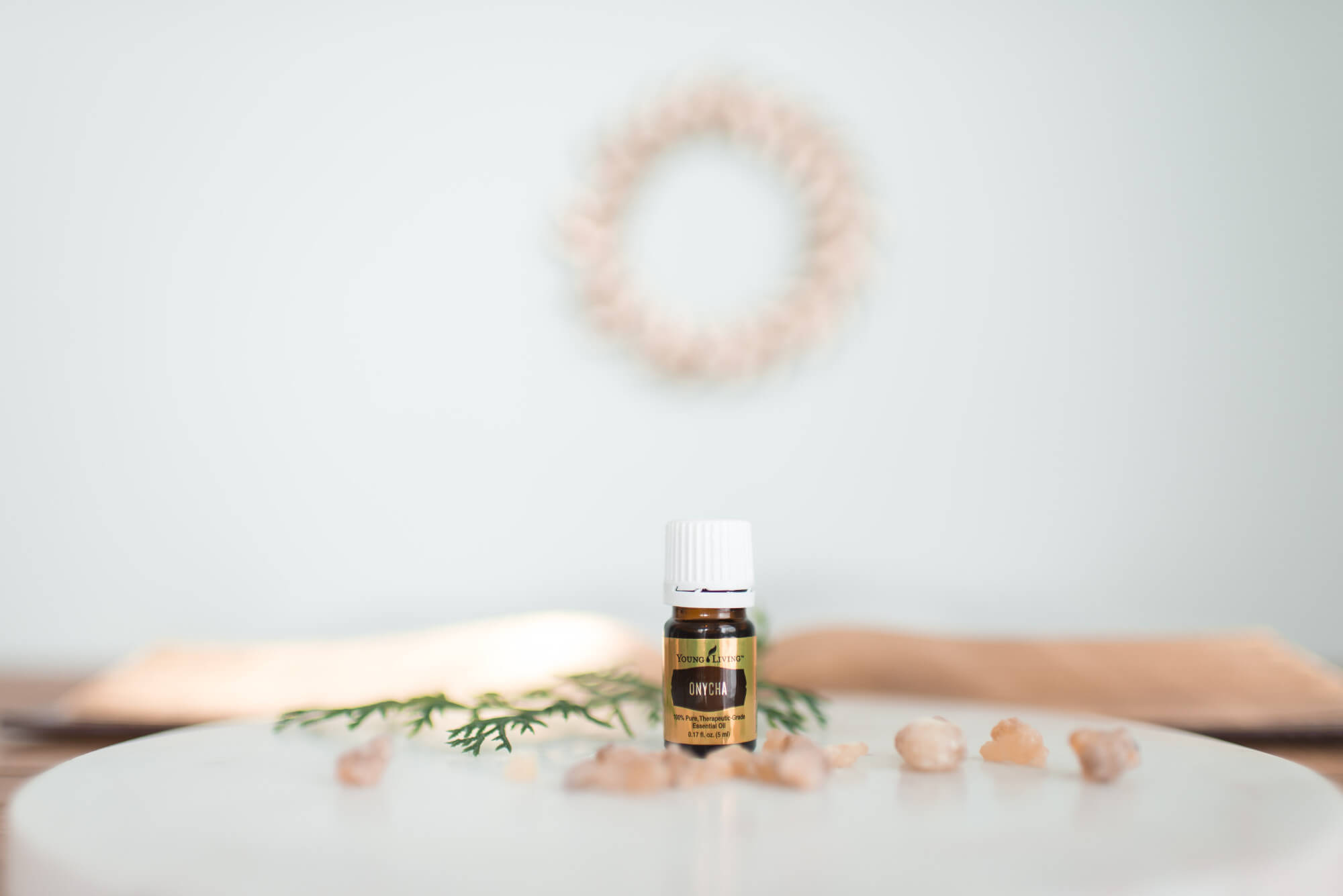
Then:
It was used in perfumes, some kinds of incense and as a flavoring. It was also used for medicinal purposes. It was said to help heighten your spiritual experiences.
Onycha oil is mentioned in the Bible one time directly and 54 times indirectly. It was an important oil of ancient times!
Now:
It continues to be a major component of incense for churches today. It's also used in everything from perfume to cosmetics. As an oil, it is warm and can help support your emotions and help you connect spiritually. It is a calming and grounding scent.
Common uses:
- Diffuse 4-8 drops to feel calm.
- Add a drop to your skincare routine.
Rose of Sharon
“I am a rose of Sharon, a lily of the valleys. Like a lily among thorns is my darling among the young women. Like an apple tree among the trees of the forest is my beloved among the young men. I delight to sit in his shade, and his fruit is sweet to my taste.” Song of Solomon 2:1
Cistus is believed to be the biblical rose of Sharon.
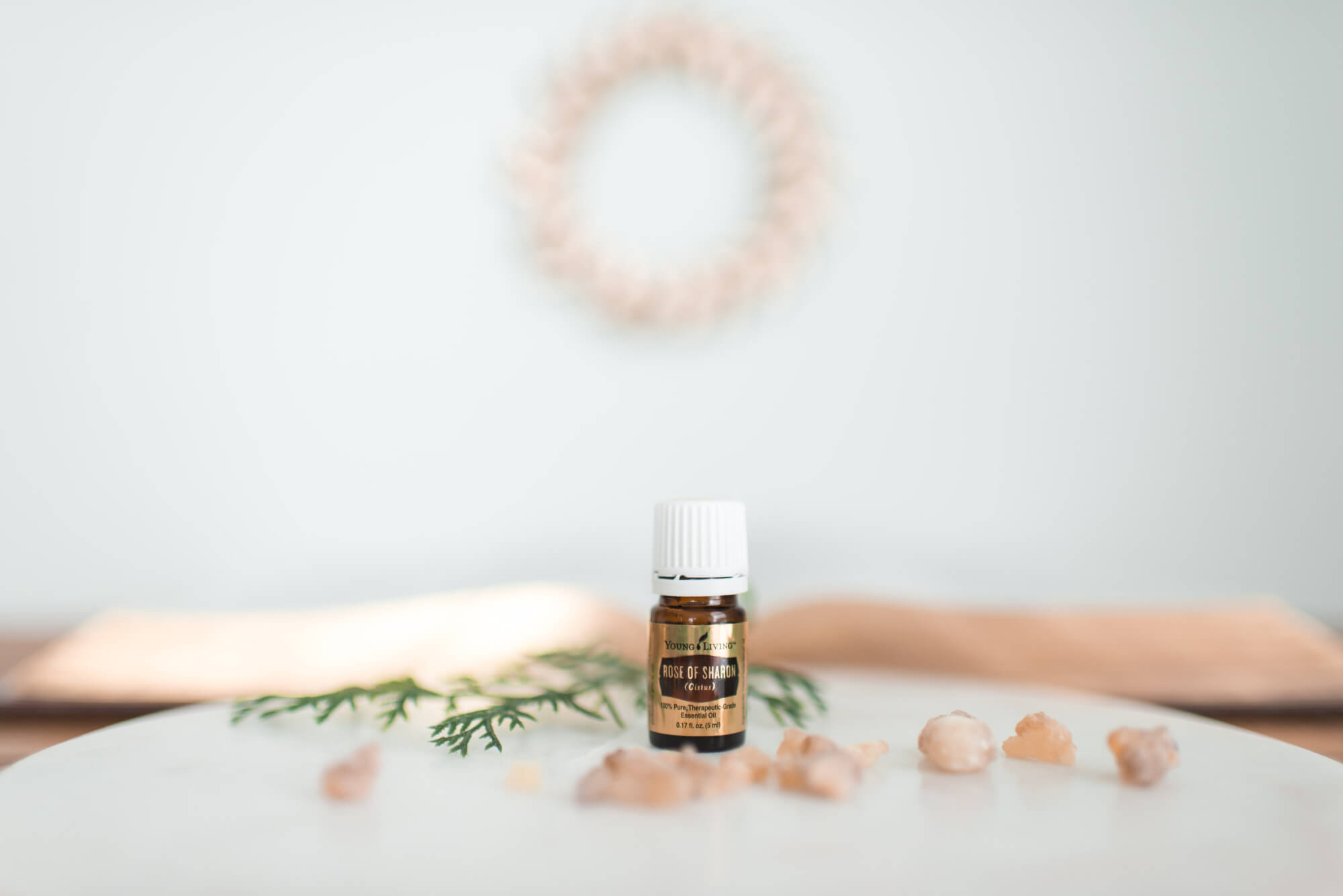
Then:
Shepherds in biblical times frequently used Rose of Sharon for cuts and wounds. It was said to help slow bleeding and prevent infection. It was also used as a perfume and may have been another component of incense in biblical times.
Now:
Its honey-like fragrance is soothing and uplifting. Think "calming" with this oil, calming physically when applied topically and calming to your emotions when diffused. When you can create a calming atmosphere, your spirits can rise, which is perfect for this time of year.
Common uses:
- Apply 2-3 drops diluted to joints when needed.
- Add 2-3 drops to a booboo roller or any skin balm recipe. Pinterest is a great place to look for recipes!
- Diffuse 4-8 drops for a calming atmosphere. Perfect during meditation or counseling.
That's a wrap! But, wow, right? What a powerful collection of oils with some dynamic history!
Thank you so much for jumping in here with me and taking a look at the Oils of Ancient Scriptures. If you'd like to grab this collection for yourself...you can do so here!
As always, please feel free to reach out with any questions or if I can be of any assistance!







0 Comments